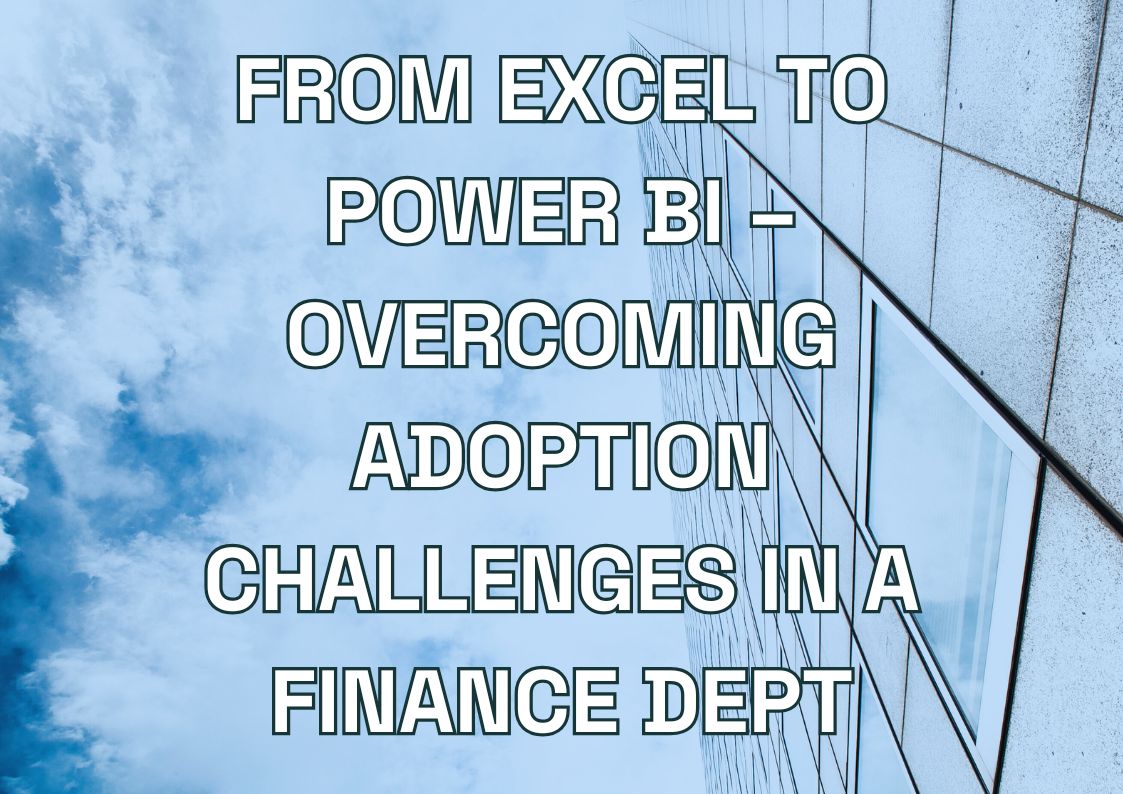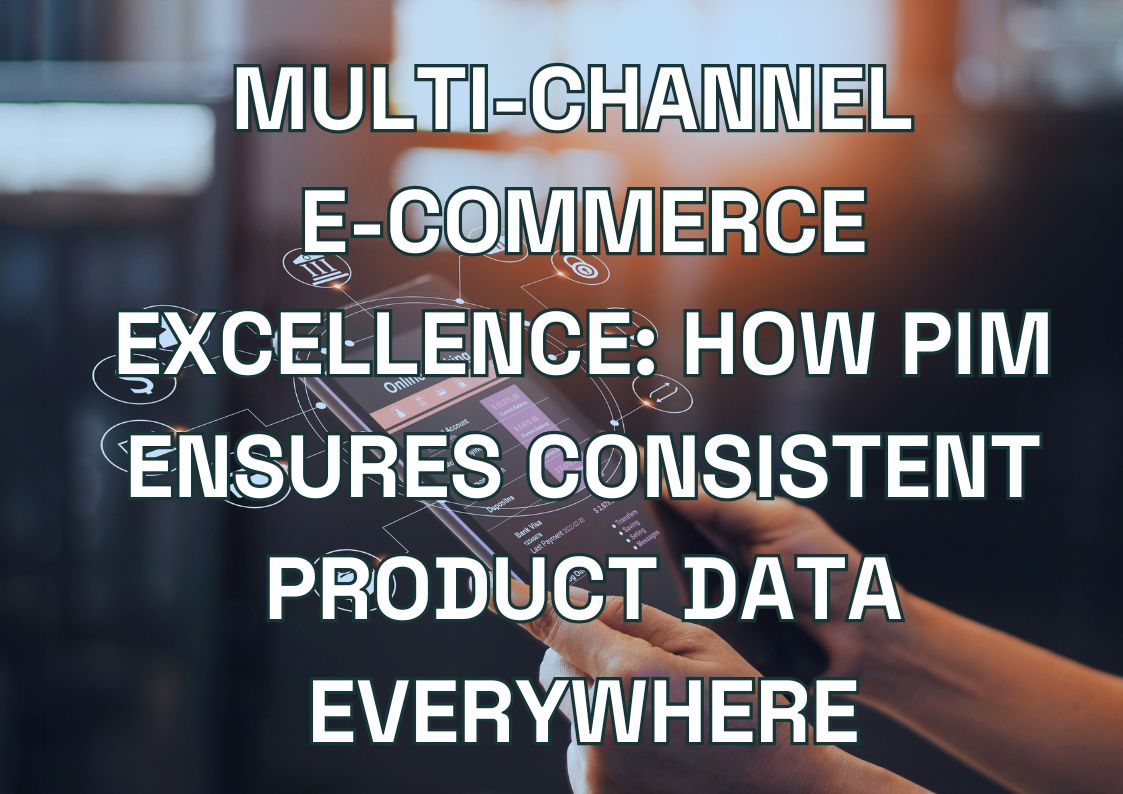This article outlines a systematic approach to system integration, comprising ten essential steps from planning to maintenance. Our process focuses on thorough analysis and risk mitigation to deliver stable, secure, and scalable integrations.
Why a Structured System Integration Process Matters
A well-defined system integration process is crucial for the success of your IT projects. Here’s why:
- It ensures the quality of your integration deliverables.
- It helps identify all necessary project elements.
- It reduces the risk of project failure or suboptimal solutions.
Our experience helps you avoid common pitfalls and apply industry best practices.
When Do You Need a System Integration Plan?
Not every project requires all steps of a comprehensive integration process. However, it’s essential to assess which activities are necessary for your specific system integration project. This assessment helps you:
- Deliver the desired quality within operational constraints
- Understand and manage project risks effectively
- Identify the operational risk profile of your integrated solution
Remember: Knowing what you’ve intentionally excluded from your systems integration plan is as important as knowing what you’ve included. This knowledge is key to managing both project and operational risks.
Want to avoid costly integration failures?
Our proven integration process covers strategy, design, deployment, and support to ensure success at every stage.
Our team crafts stable and scalable integrations tailored to your goals.

Our team crafts stable, secure, and scalable integrations tailored to your business goals.

10-Step System Integration Process
Step 1 – Requirements capture and analysis
Knowing what’s needed is the first step toward delivering it. It’s common for people to underestimate the scale of the task they face and underspecify their requirements. This invariably causes problems down the line causes them to incur additional costs and pushes timelines out.
- Use case and integration scenario definition – Identifying the data flows, process dependencies, and the touchpoints between the various systems involved is critical. Even the most complex integration scenarios are composed of relatively straightforward building blocks.
- Target systems assessment and interface discovery – Understanding what is viable and the various options available for all of the integration points is essential. Having the full picture allows you to weigh up the pros and cons of each potential approach to determine the optimal solution.
- Data mapping exercise and trust hierarchy definition – Modeling the composite data structures and determining which data source populates which entities help define which systems may be relied upon to give the best possible single version of the “truth”.
- Design envelope definition – Declaring what is expected and desirable helps ensure that the delivered integration performs as required in all situations irrespective of what the world throws at it.
- Performance parameters – The integration should be performed in a manner so as not to impact the user experience or prevent the system from delivering business value.
- Anticipated volumetric throughput – Understanding the likely transactional flow and how that flow fluctuates over time enables you to scope the integration properly and avoid volume-related performance degradations.
- Security and traceability requirements – Depending on the criticality and sensitivity of the data being shared and manipulated via the integration it will be necessary to implement appropriate controls to assure it’s secure and all interactions with it are traceable.
- Pre-existing integration infrastructure discovery – Leveraging the investments of the past to drive the improvements of the future makes sense. There’s no point reinventing the wheel if there is a perfectly serviceable ecosystem of integration tooling available.
Step 1 Business Benefits
- Saves money & time: Avoids rework, delays, and unexpected costs by clearly defining needs upfront.
- Boosts performance: Optimizes data flow and avoids bottlenecks for a smooth integration.
- Improves data quality: Ensures consistent and reliable data across all connected systems.
- Enhances security: Identifies security needs early for a robust and secure integration.
- Leverages existing tools: Saves time and resources by utilizing existing integration infrastructure.
Step 2 – Strategy definition
Defining the desired end state, or at least an interim target state helps to focus resources and activity. Considering what is and what could be, enables you to make what will be more certain and achievable.
- Current integration ecosystem review – Most organizations have lots of tools. Too many usually. Many are underutilized. Some are misused due to a lack of understanding as to what they can do. Some are not used as much, or as well, as they could be.
- Skills and capabilities assessment – Assessing the current capabilities and capacity of the team as well as their proficiency with the tooling/platforms available to them helps ensure your people are utilized to the best effect. Skills gaps are identified, and appropriate training plans are developed to ensure your people can support the integrations you need.
- Current contractual commitments and previous investment review – Understanding the terms and conditions associated with the legacy tooling landscape is important. Just because you have access to a platform, it doesn’t mean that using it will be cost-effective. Evaluating the current licensing models and evaluating the projected costs helps keep budgets under control.
- Workshops and Policy Definition – Thrashing out the various options and debating the relative merits of different courses of action helps to drive better decisions. Policies need to be accepted by all parties involved if they are to be adopted and implemented fully.
Step 2 Business Benefits
- Clear Goals & Focus: Defines a clear vision for the integration, ensuring efficient resource allocation and achievable outcomes.
- Optimizes Existing Tools: Identifies underutilized tools and maximizes the value of existing investments.
- Upskills the Team: Assesses team capabilities and develops training plans for a skilled and proficient workforce.
- Cost-Effective Integration: Reviews current contracts and licensing models to avoid unnecessary costs.
- Better Decision-Making: Collaborative workshops and policy definition lead to well-informed and effective integration strategies.
Step 3 – Evaluation of integration options
There are always multiple ways to approach any given integration requirement. Selecting a model or method that works is relatively simple. Selecting the optimal approach that delivers what the business needs within the defined constraints at the lowest cost and risk is what makes the difference.
- Reference architecture reviews and comparison – With years of experience in developing and deploying B2B integration services, we ensure our solutions meet clients’ business, technical, and operational requirements. By assessing various models and reference architectures, we help clients choose the integration approach that not only works effectively but is also the best fit for their unique needs and constraints.
- Relative merit identification and scoring – Using a variety of objective criteria such as risk, operational overhead, supportability, middleware costs, etc. we help to ensure that all of the potential integration options are evaluated dispassionately to eliminate familiarity bias and make sure the most appropriate solution is selected.
- Cost, risk, and level of effort estimations – Using our extensive experience, we prepare detailed estimates of the level of effort and associated costings for all of the integration approaches being considered. This allows the business to have foresight into the full lifecycle investment needed and avoids budget overspend.
- Business case development and presentation – We help technologists explain the rationale behind the recommended approach in a way that can be consumed by the business. By translating the technical characteristics of the proposed solution into business-focused traits such as risk mitigation and future-proofing we help everyone to understand the consequences of the decisions they make.
Step 3 Business Benefits
- Select Best Integration Approach: Evaluate options to find the most cost-effective, low-risk solution that meets business needs.
- Reduces Bias: Uses objective criteria to avoid favoring familiar solutions and choose the optimal approach.
- Clear Cost & Effort Analysis: Provides detailed cost and effort estimates for informed decision-making and budget control.
- Alignment with Business Goals: Translates technical aspects into business benefits for clear understanding and better decision-making.
Step 4 – Open issue identification and resolution
Throughout any development project, there are always issues that are identified that need to be addressed. We don’t shy away from challenges, nor do we bury our heads in the sand and pretend they’re not real. We diligently work through open issues to get to a conclusion that is satisfactory to all stakeholders.
- Development of technical risk register – The first step to minimizing and mitigating risk is to understand what risks are present and what controls are necessary to prevent them from causing problems during the project. Maintaining a risk register allows everyone to see what the current issues are and stops nasty surprises.
- Definition of potential controls / mitigating steps – Risk is inevitable. Having that risk manifest into a project-impacting issue or incident isn’t. The deployment of controls and countermeasures helps to make it less likely that risk will cause problems. Sometimes the risk is controlled to an acceptable level and sometimes it is eliminated.
- Test case development / Proof of Concept definition – The only way to be certain that issues are resolved is to test the fixes, workarounds, or contingencies developed to deal with them. Too many providers simply cross their fingers and hope that the problem doesn’t come to light. Hope is not a strategy. We make sure that issues are dealt with and do not impact project delivery.
- PoC delivery and results evaluation – Sometimes it is necessary to prove a proposed course of action before committing to it for the final deployed solution. In such cases, we will provide full transparency into the testing we are performing so that you can be confident in the outputs you receive.
Step 4 Business Benefits
- Proactive Issue Resolution: Identifies and addresses challenges early, avoiding delays and ensuring project success.
- Minimized Risks: Maintains a risk register and implements controls to prevent project disruptions.
- Thorough Testing: Develops test cases and conducts proofs of concept to verify solutions and ensure issue resolution.
- Informed Decisions: Provides transparency in testing and evaluation, allowing for confident decision-making.

Step 5 – Scope of works definition
A clear, concise, and comprehensive description of the activities to be performed and the associated deliverables instills confidence and helps you to explain to your colleagues why working with a specialist integration provider is the best option.
- High-level project plan development/validation – Breaking complex problems into a seemingly simple series of tasks is the mark of any professional. We make the impossible appear “easy” by nature of the fact that we’ve been there and done it many times before.
- Formalize level of effort estimates and costing – Experience and the pragmatism that comes with it are what help us to accurately estimate the resources needed to deliver your integration. We pride ourselves on our ability to plan and deliver to the plan, meaning that you don’t have to go back to the business for additional funding mid-project.
- Select a contract mechanism in conjunction with you – Time and materials? Fixed fee with milestones? Retainer model with a consumption-based uplift? How we contract for the project depends on how our clients can finance the development and their willingness and ability to contribute to and participate in, the development and deployment process. Sometimes we augment their internal team, and sometimes we take the lead and manage the integration end-to-end.
- Determine contingency and develop risk mitigation plans – We must always expect the unexpected. Preparing for contingencies and potential issues makes them less scary and reduces the impact on project schedules and budgets.
- Define tasks, deliverables, and associated outputs – We specialize in “right-sourcing”. We develop the software integration plan and assign the right resources to perform the right tasks irrespective of where they are located. Getting it done right and getting it done right the first time is what drives us.
- Success criteria definition – Every stage of the project has clearly defined outputs and objectives that build towards the end goal. By hitting our milestones and delivering on the interim checkpoints we ensure the project comes in on time and to specification.
Step 5 Business Benefits
- Clear Project Communication: Defines project scope, deliverables, and benefits, justifying the use of a specialist integration provider.
- Efficient Project Management: Breaks down complex projects into manageable tasks for smooth execution.
- Accurate Cost Estimates: Leverages experience for precise resource allocation and avoids mid-project budget increases.
- Flexible Contracting Options: Offers various contract models to suit your project financing and involvement preferences.
- Proactive Risk Management: Identifies contingencies and develops mitigation plans to minimize project disruptions.
- Right-Sourced Resources: Assigns the most qualified resources to each task, regardless of location, for optimal results.
- Measurable Success: Defines clear success criteria with milestones to ensure the project stays on track and meets goals.
Step 6 – Technical setup
Developer productivity is dependent upon the tools they use and the environments they work within. We ensure that our people are productive from day one by carefully managing and monitoring our technical environments.
- Sizing and pre-requisite definitions – We work with our client’s operations team to ensure the planned production environments are capable of supporting the projected loads at the required performance level.
- Access rights provisioning – Security, traceability, and, ongoing maintainability require access management to be considered from the start. We ensure the access model used within development is as robust as that required in production to give you the confidence and peace of mind that your data is being handled responsibly.
- Middleware or integration platform deployment – Whether it be a net new installation or the reconfiguration of an existing platform, we ensure the tooling is functioning correctly and that it is capable of delivering the end-to-end transactional flow performance you need.
- Adapter deployment and baseline configuration – Where appropriate we will install and configure any productized adapters associated with the integration ready for them to be used for the in-scope integration scenarios.
Step 6 Business Benefits
- Enhanced Developer Productivity: Provides developers with the right tools and environments for efficient work.
- Optimized Performance: Ensures production environments can handle expected workloads for smooth system operation.
- Robust Security: Implements secure access controls for responsible data handling and user accountability.
- Efficient Middleware Setup: Deploys and configures middleware or integration platforms for optimal performance.
- Ready-to-Use Adapters: Installs and configures pre-built adapters for immediate integration use.
Step 7 – Data assessment
Data is at the very heart of every integration. It can make or break the project and consequently, it needs to be considered very carefully. We analyze your data landscape and identify issues that could affect the effectiveness of the delivered integration.
- Data stream analysis – Using techniques such as sampling and synthesis we determine the make-up of the data sources that are part of the integration to ensure that potential problems are identified early in the process and can be addressed.
- Volume, variance, completeness, and quality – Data issues come in many forms. Sometimes the data is of dubious quality. Sometimes it is incomplete. Sometimes it contains errors that will cause downstream processes to fail. To deliver a robust integration that can handle such exceptions elegantly it is necessary to understand the datasets and their limitations.
- Data enhancement/augmentation requirements – Supplementing the existing data with additional content from external sources helps to enrich your solutions and gives you more options when it comes to analytics and automation.
- Trusted source hierarchy definition – Not all data sources agree. It is common for there to be discrepancies between datasets. It is therefore essential to evaluate the relative trustworthiness of individual data sources, and indeed the individual data points or records stored within them, if a single unified version of the “truth” is to be developed.
- Data reconciliation process and rule definition – Sometimes you’ll want to use data from one source and sometimes it will be more appropriate to use an alternative source. Defining these rules and embedding the logic within the integration ensures you get the very best data set possible from your disparate data sources.
- Test data requirements definition – Using production data within test environments is inherently dangerous. Techniques such as data obfuscation or the use of synthetic data generators that mirror real-world data characteristics mitigate the risks and provide you with the test data you need to be able to be confident that the deployed solution is capable of handling operational loads without incident.
Step 7 Business Benefits
- High-Quality Data Integration: Analyzes data landscape to identify and address potential issues for seamless integration.
- Data Issue Detection: Uses data stream analysis to identify problems like volume, variance, completeness, and quality early on.
- Enhanced Data Value: Explores data enrichment opportunities from external sources for richer solutions.
- Accurate Decision-Making: Defines trusted data source hierarchy for reliable information and unified “single source of truth.”
- Optimized Data Usage: Establishes rules for choosing the best data source based on specific needs.
- Secure Testing: Uses obfuscation or synthetic data for safe and reliable testing without compromising real data.
Step 8 – Integration development
This is where the rubber meets the road. We build the integration through the configuration of platforms, adapters, and middleware or messaging buses as well as via the development of code to access APIs and SOA interfaces.
- Test data creation – Without sufficient test data that accurately represents real-world scenarios, it is impossible to deploy any integration with confidence that it will perform as required.
- Configuration and coding – We use accelerators, pre-configured adapters, and proven integration stubs to minimize the risk and reduce the time takes to deliver a functional integration that truly works. Our team has built and deployed thousands of integrations and is used to working to tight timelines with mission-critical datasets to deliver enterprise-grade integrations.
- Testing – Testing provides you with the confidence that not only is the integration working but more importantly that it’s working as desired. Getting data from point A to point B is relatively simple. Doing that at scale, within the required performance parameters and, being able to handle data of variable quality is what makes the real difference.
- User Acceptance Testing (UAT) – We support your team in testing the integration to ensure it is functioning as expected and required. It should be noted that it is usually impractical for UAT to pick up many common integration failures that may be due to resource contention, bottlenecks, and excessive exception rates.
- Stress testing / Soak testing / Load testing – For organizations that are looking for peace of mind we are happy to support, or conduct, load testing to ensure that the integration can handle operational loads and projected transactional spikes. We will often overload integrations beyond the design envelope to ensure they do not fail and to gain an understanding of how performance is likely to degrade in burst scenarios.
- Penetration testing – Our security specialists will attempt to hijack transactional messages, intercepting them and attempting to inject malicious code into their payloads to ensure the integration does not increase your threat surface area or introduce a vulnerability into the end-to-end solution.
Step 8 Business Benefits
- Efficient Integration Development: Leverages pre-built components and proven practices for faster development and reduced risk.
- Comprehensive Testing: Employs various testing methods (UAT, load testing, penetration testing) to ensure integration functionality, performance, and security.
- Real-World Data Testing: Uses realistic test data to guarantee integration stability under actual conditions.
- Scalable Integration: Designs and tests the integration to handle expected workloads and peak demands with minimal performance degradation.
- Enhanced Security: Conducts penetration testing to identify and eliminate potential security vulnerabilities introduced by the integration.
Step 9 – Post-deployment preparations
You wouldn’t undergo major surgery without planning to spend time in the recovery room and convalescing. Your integration needs similar levels of care if it is to bed in and become an established part of the IT ecosystem.
- Monitoring regime definition – Knowing that the integration is running is nice. Knowing how well it is running is much more useful. By tracking key characteristics and behaviors you can have confidence that all is performing as it should. Where thresholds are breached or trend analysis suggests they will be, our team will proactively intervene to investigate and remediate issues before they impact your systems.
- Technical handover – We ensure that your team knows what they need to know to operate the integration successfully without having to refer to us. We also ensure they know when to call us in to prevent them from turning a minor drama into a full-blown crisis.
- Documentation provision – Depending on your requirements we will provide documentation regarding the integration design, data architecture, and adapter configurations as well as the day-to-day operational tasks that should be completed to ensure the delivered solution performs as required.
Step 9 Business Benefits
- Smooth Integration Transition: Minimizes disruption by planning for post-deployment monitoring, support, and user knowledge transfer.
- Proactive Problem Management: Defines monitoring practices that detect performance issues and enable early intervention before disruptions occur.
- Knowledge Transfer: Equips your team with the necessary skills and documentation to operate the integration independently.
- Reduced Reliance on External Support: This enables your team to handle routine tasks and identify situations requiring external assistance.
- Long-Term Performance: Ensures the integration continues to function optimally through ongoing monitoring and proactive intervention.
Step 10 – Ongoing maintenance & support
The integration is complete and it’s working. But that’s not where the story ends. Successful integrations need to be maintained as the systems they connect invariably change over time and the business’s requirements flex to accommodate changing market conditions.
- Monitoring data analysis – By analyzing the outputs of the monitoring tools focused on the integration we can ascertain if something has changed that is likely to jeopardize the stability or performance of the end-to-end solution.
- Exception level tracking – Keeping an eye on the rate at which exceptions are raised helps to identify when the underlying assumptions that the integration was based upon are no longer valid. Everything changes over time. Source and target systems change. How people use those systems changes. Tracking exception levels helps to proactively alert you to when the integration needs to be reconfigured or realigned in response to changes upstream or downstream.
- Systems update reviews and impact assessments – We will work with you to proactively review system and configuration level changes to source and target systems in order to determine the likely impact on the delivered integration. Where it is likely that planned changes will have a detrimental impact on the integration’s stability or performance we will work with you to implement contingency actions to mitigate those effects until such time that the integration can be reconfigured.
- Ongoing mapping and configuration updates – Data models change. The reconciliation rules associated with accessing multiple source systems fluctuate over time as data quality varies. Fields are repurposed or retired. All of these things may require the mappings used within the integration to be revisited and reconfigured.
- Integration risk assessment and control effectiveness review – We will assess the potential for issues and how well the deployed control measures are working to determine the level of risk associated with the integration.
Step 10 Business Benefits
- Long-Term Integration Stability: Monitors and analyzes data to identify changes that could impact the integration’s performance or stability.
- Proactive Issue Detection: Tracks exception levels to anticipate the need for reconfiguration due to changes in source or target systems.
- Minimized Disruption from System Updates: Reviews system updates and assesses potential impact on the integration, allowing for proactive mitigation strategies.
- Adaptability to Changing Needs: Ensures data mappings and configurations stay current with evolving data models and business requirements.
- Reduced Integration Risk: Regularly assesses integration risks and control effectiveness for continued secure and reliable operation.
System Integration Process Steps – How Multishoring Delivers the Results You Need
At Multishoring, system integration is our core expertise. Our team knows how to mitigate risks, avoid common pitfalls, and ensure your project’s success. We focus on the elements that truly matter, making your integration work within your specific constraints.
How do we tailor our approach to your needs? We work closely with you to define an optimal schedule based on your risk appetite, budget, and timeline. Our system integration plan includes the necessary steps to ensure you feel confident in the delivered solution and its ability to run issue-free for as long as you need it.
What about complex integration scenarios? Integrations may be complex, but they don’t need to be complicated. We use our experience and expertise to make challenging integration scenarios happen. When standard approaches aren’t enough, we go beyond to find the right solution.
How do we balance thoroughness and efficiency? We don’t over-engineer projects to artificially inflate the scope, nor do we skimp on activities that impact the integrity of the delivered integration. Our focus is on creating a system integration process that’s both comprehensive and efficient.
With Multishoring, you get a tailored approach that delivers stable, secure, and scalable integrations. This allows you to focus on your core business activities, confident that your integration project is in capable hands.
Some of the benefits of working with us are:
We follow the 10 system integration process steps that cover all the aspects of a successful integration, from planning and design to testing and deployment.
We have a team of system integration experts who have the skills and knowledge to handle any integration challenge, no matter how complex or unique.
We use the latest tools and technologies to ensure your integrations are compatible, efficient, and reliable.
We offer flexible and transparent pricing models that suit your needs and budget.
We provide ongoing support and maintenance for your integrations, ensuring they run smoothly and securely.
If you want to learn more about our system integration process steps and how we can help you with your integration project, contact us today!
Let's talk about your IT needs

Let me be your single point of contact and lead you through the cooperation process.
Choose your conversation starter
Signed, sealed, delivered!
Await our messenger pigeon with possible dates for the meet-up.








